Very few cathedrals in Britain define an architectural style more than this amazing Gothic Cathedral in South West England.
Its spire majestically dominates the landscape of the relatively small city in which it’s located and has done so for numerous centuries.
In this article, you’ll discover some of the most interesting facts about Salisbury Cathedral, one of the most fascinating churches in the country for several reasons.
1. It’s located in a medieval city situated at the confluence of 3 rivers
Salisbury Cathedral is located in the city of the same name which is part of the county Wiltshire in South West England.
The medieval city has approximately 40,000 inhabitants and is situated about 30 kilometers (20 miles) northwest of Southampton and 50 kilometers (30 miles) southeast of Bath.
The city was originally further north in a place now known as “Old Sarum.” It moved further south to the confluence of 3 rivers in the region, the Avon, Nadder, and Bourne RIvers.
Another remarkable tourist attraction in the region is Stonehenge, a Prehistoric monument situated on the so-called Salisbury Plain. It’s about 13 kilometers (8 miles) northeast of Salisbury.

2. It replaced a nearby older Norman cathedral in the 13th century
The main reason why the city moved into the valley south of Old Sarum is because of the relocation of Salisbury Cathedral.
Old Sarum Cathedral was constructed in the aftermath of the Norman Conquest of England in 1066 and completed in the early 1090s.

A dispute resulted in the seat of the bishops of Salisbury being moved from Old Sarum to its present location in Salisbury.
Nothing except the foundation of the Romanesque building remains today, a result of the fortified city being deserted in the early 13th century.
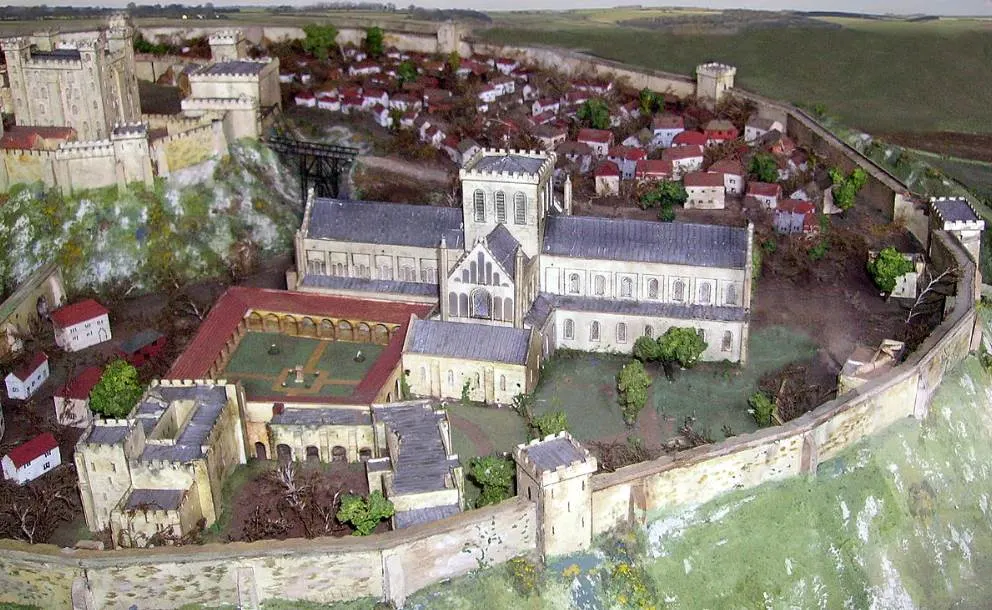
3. Salisbury Cathedral features the tallest church spire in England since 1561
The foundation stone of Salisbury Cathedral was laid on April 28, 1220. This was done by William Longespée, 3rd Earl of Salisbury (1176-1226), the half-brother of King John, and his wife Ela of Salisbury, 3rd Countess of Salisbury.
Most of the building, including the nave, choir, and transepts were completed by the year 1258. The cloister and chapter house of the cathedral were additions added in 1240 and 1263 respectively.
The most prominent feature of this amazing example of Early English Gothic architecture is its huge spire.
This pointy spire is the epitome of Gothic architecture, stands 123 meters (404 feet) tall, and was completed in the year 1320.
Following the collapse of the spire of Old St Paul’s Cathedral in London, it became the tallest church spire in England, a record it still holds today.
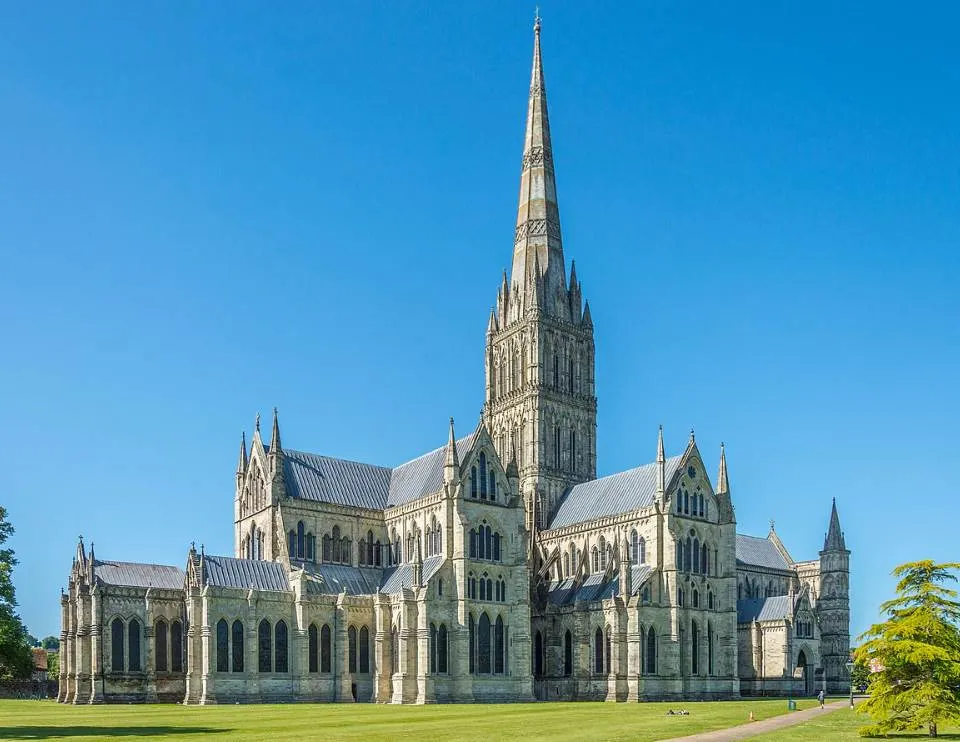
4. The spire would have certainly collapsed without the addition of several features
The spire of the older version of St. Paul’s Cathedral wasn’t the only one that collapsed during the Middle Ages and beyond.
Various other spires were destroyed because of poor construction methods. This includes some spires that were one the tallest in England, including those of:
- Malmesbury Abbey (1180 to 1500)
- Lincoln Cathedral (1311 to 1548)
- Chichester Cathedral (1402 to 1861)
The spire of Salisbury Cathedral would have certainly met the same faith if several supporting elements weren’t constructed in the following centuries.
Some architectural elements that avoided this were buttresses, bracing arches, and anchor irons.

5. It houses the best of only 4 surviving versions of the Magna Carta
The cathedral’s chapter house was completed at the same time as the rest of the building in the 13th century and is an amazing attraction in itself.
It features an octagonal design, a remarkably slender pillar in the center, and is decorated with a magnificence medieval frieze that depicts scenes from the books of Genesis and Exodus.
This remarkable space also houses one of the 4 extant copies of the original “Magna Carta Libertatum” or “Great Charter of Freedoms.”
This was a royal charter signed by King John of England on June 15, 1215, in Runnymede near Windsor Castle. It promised more freedom for a group of rebel barons.
The royal charter ended up being annulled shortly after and it resulted in the First Barons’ War (1215-1217) which effectively restored it.

6. The West Front was inspired by another famous Gothic cathedral
The other magnificent architectural highlight of the cathedral is the West Front. It features approximately 130 niches of which 79 are occupied by statues of important people.
The façade has a square design with a width and height of about 33 meters (108 feet). It was certainly part of the original 13th-century design of the cathedral.
It doesn’t feature towers or spires, elements that were replaced by the screen-like design of the West Front.
Historians assume this was inspired by the magnificent façade of the relatively nearby Wells Cathedral. This is another stunning example of Early English Gothic architecture of which construction started around 1175.
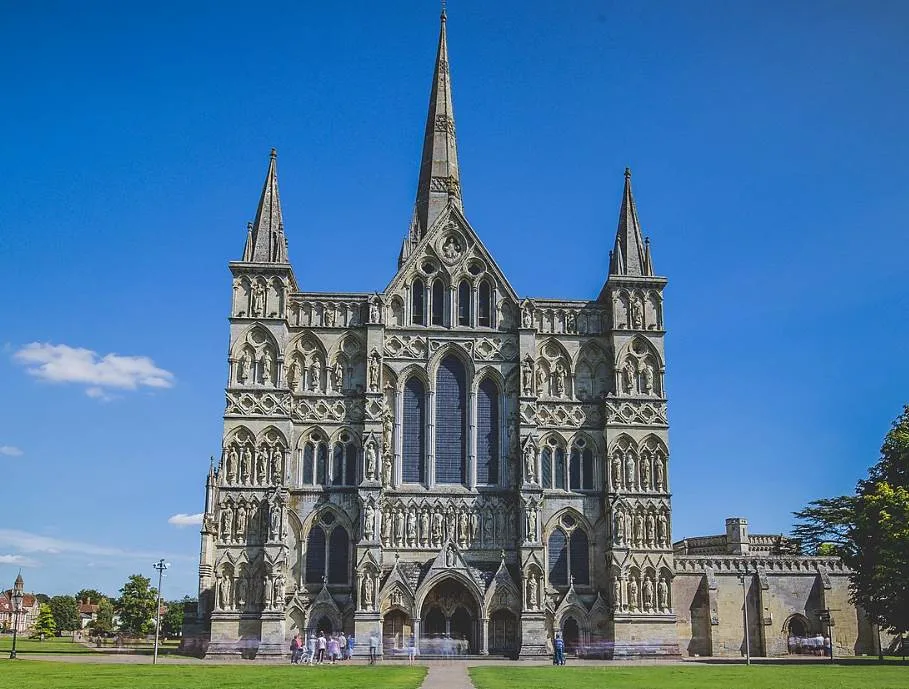
7. One of the 79 sculptures depicts an important figure in the cathedral’s history
Old Sarum was deserted because of a dispute with Bishop of Salisbury Hubert Walter, a man who spent a lot of time abroad during the Third Crusade.
It was the wealthy Richard Poore and his brother Herbert who succeeded him and who donated the land on which the cathedral was constructed.
A statue of Richard Poore (who died in 1237) was added to the West Front between 1867 and 1871.
Of the 79 statues that decorate the façade of Salisbury Cathedral, only 7 date back to the 14th century. The remaining were added in the 19th (63), 20th (5), and 21st (4) centuries.

The nave of the cathedral only has a width of 24 meters (78 feet) and a length of 71 meters (234 feet). This is remarkably narrow for a relatively big church.
In between the pillars, there are numerous tombs and graves of prominent members. The most recent addition is the tomb of Sir Edward Heath (1916–2005), the UK Prime Minister between 1970 and 1974 who lived in the area during the final 2 decades of his life.
He joined William Longespée, 3rd Earl of Salisbury, (c. 1165–1226) the man who laid the foundation stone of the cathedral.
The half-brother of King John was also the man who brought the copy of the Magna Carta to Salisbury.
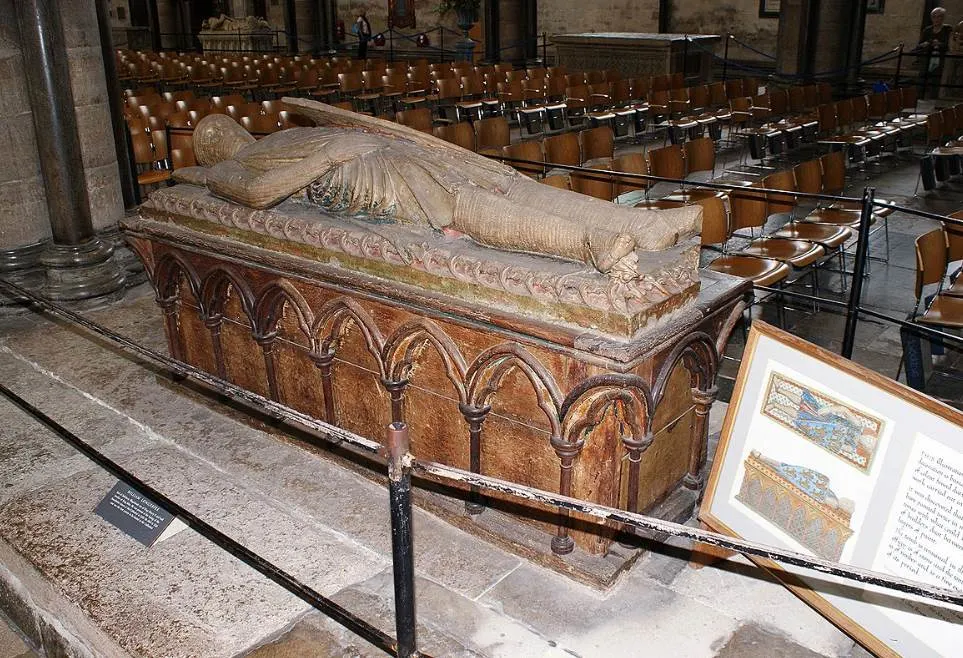
9. The cathedral is possibly home to the oldest working modern clock in the world
The Salisbury Cathedral clock is a medieval device that is believed to have been completed in the year 1386 and was restored to working condition in 1956.
It’s a mechanical clock and believed to be one of the first of its kind, and more importantly, the oldest still working modern clock in the world.
This type of iron-framed clock is referred to as a verge and foliot clock. Whether or not it’s the oldest is up for speculation because other clocks have made this claim as well.
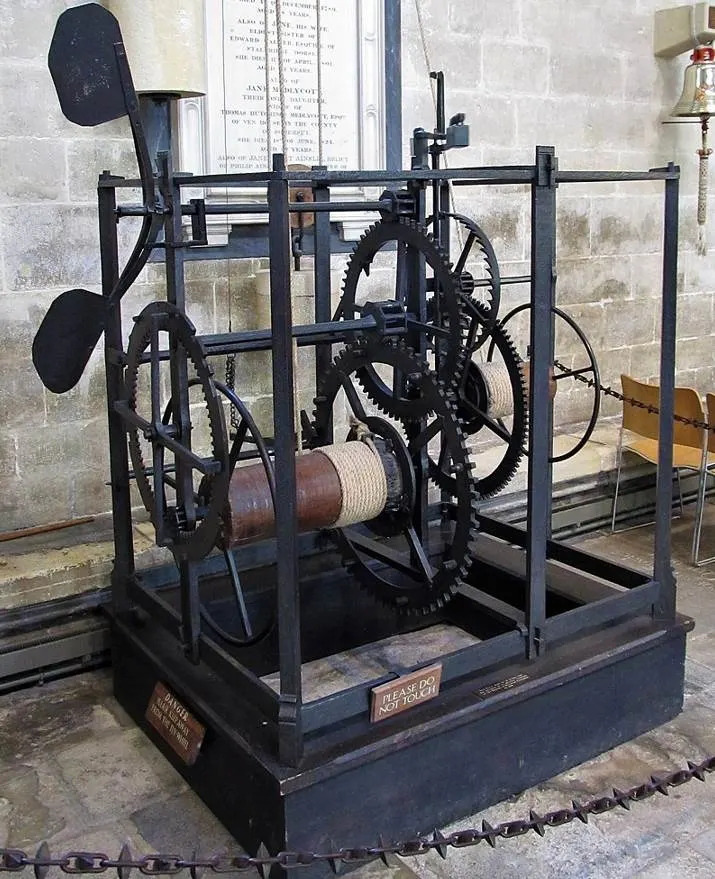
10. The Tower tour allows you to discover how they constructed the tall spire
So who on Earth did they construct such a tall spire without the use of modern-day machinery?
This is the first question that comes to mind when you stand in front of this incredible feat of architecture.
The answer can be witnessed when you take the so-called “Tower Tour.” This allows you to take a look inside the hollow spire of the cathedral. Here you can see the medieval timber scaffolding that is still present inside it today.
Yes, building this magnificent structure was hard labor and quite a dangerous endeavor as well, don’t you think?

11. The cathedral lacks a ring of bells but holds two more records
The cathedral was accompanied by a rather peculiar bell tower that was placed approximately 98 meters (320 feet) northwest of the church.
This tower was demolished along with several other modifications made in the late-18th century.
Salisbury still holds two more remarkable records which are:
- It features the largest cloister which adjoins the cathedral directly to the west.
- It features the largest cathedral close in Britain with an area of approximately 32 hectares (80 acres).
You can spend an enjoyable afternoon in the vicinity of this wonderful structure.

12. The cathedral served as the inspiration for a beautiful John Constable painting
John Constable was one of the most renowned Romantic painters of the early 19th century.
He was able to depict magnificent landscapes in a wonderful manner, a talent that transformed Dedham Vale in his native Suffolk into Constable Country.
He earned a remarkable commission to paint Salisbury Cathedral in 1825 and produced a stunning painting for John Fisher, Bishop of Salisbury.
In appreciation for this commission, he included both the bishop and his wife in the bottom left corner of the work.
The view from this angle has barely changed as it was about 200 years ago.

